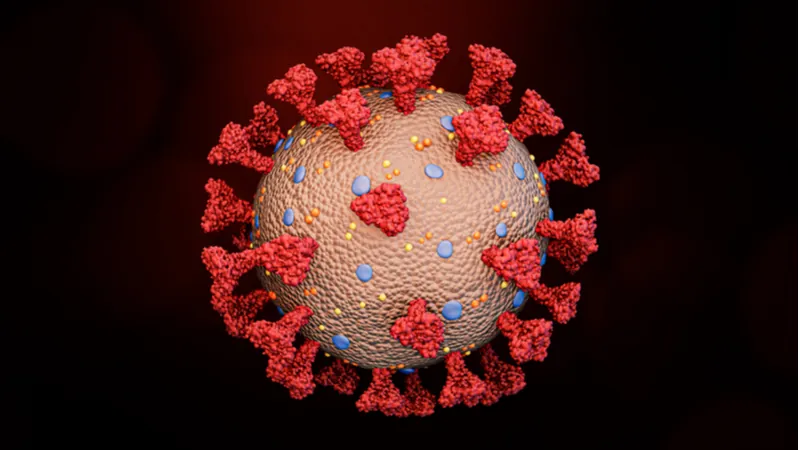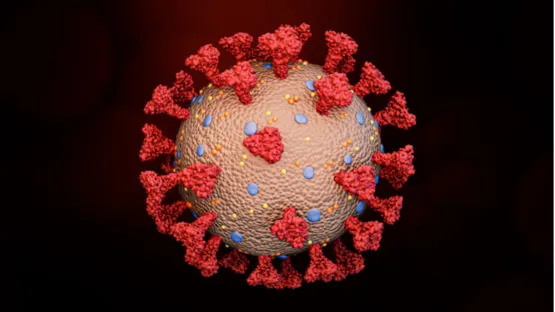New research published in the journal Science has shown that the spike protein of SARS-CoV-2, the virus that causes COVID-19, causes senescent cells to secrete more of the senescence-associated secretory phenotype (SASP), causing hyperinflammation and weakening the body’s defenses against viruses.

Read More
An established link
The researchers of this new study cite previous research linking the known symptoms and risk factors of COVID-19 to the factors involved in cellular senescence. Many of the symptoms associated with severe COVID-19, including myocarditis, organ failure, respiratory distress, and the infamous cytokine storm, are also associated with factors known to be part of the SASP [1]. The SASP factors IL-6, IL-10, and IP-10 can even be used to predict the outcome of COVID-19 patients [2].
However, this is merely correlation. The researchers sought to show a more direct link between senescent cell accumulation and the effects of COVID-19.
A weakened defense
The researchers treated human tissue with conditional media from senescent cells; in other words, they exposed healthy human cells to the SASP. In kidney tissue, two key viral defense genes were suppressed; antibodies against several of the SASP factors partially restored the expression of these genes. In human lung, kidney, and endothelial tissue, the gene TMPRSS2, which is critical to the virus’ entry into cells, showed greater expression upon exposure to the SASP; lung tissue also expressed greater ACE2, a well-known factor in SARS-CoV-2 infection.
Tissue taken from elderly patients supported these results, showing that cells expressing the senescence marker p16ink4a were often adjacent to cells expressing TMPRSS2.
Collectively, these data further support the conclusion that SnC could promote SARS-CoV-2 pathogenesis by decreasing viral defenses and increasing expression of viral entry proteins in neighboring non-SnCs through amplified secretion of SASP factors.
Pathogens and senescent cells
To determine the effects of pathogen exposure on senescent cells, the researchers exposed generally pathogen-free laboratory mice to pet store mice, which are carriers of many common murine diseases. 89% of young mice survived, but nearly 100% of 20-month-old mice died within two weeks of this exposure. SASP factors were significantly increased in these exposed older mice compared to younger mice exposed to the same array of pathogens. The researchers note that this is consistent with their hypothesis that existing senescent cells become hyperactive upon pathogen exposure.
The researchers also show data suggesting that a particular coronavirus, mouse hepatitis virus (MHV), is largely responsible for the mortality seen in old mice. Immunizing old mice against MHV protected them against death due to microbe exposure.
The researchers then tested to see whether reducing senescent cells would also allow mice to survive MHV. By dosing 20-month-old mice mice with fisetin, a well-known senolytic, the researchers found that half of them survived exposure to MHV. All of the 20-month-old mice without fisetin in their diet died.
Additional experiments, including a short-term fisetin regimen and treatment with dasatinib and quercetin, showed the same results: removing the senescent cells of aged mice gave them a 50% survival rate rather than a 0% survival rate upon exposure to MHV. Therefore, as the researchers conclude, it is possible that removing senescent cells through senolytics is a viable approach towards ameliorating the cytokine storm of SARS-CoV-2 infection.
Two separate human clinical trials, NCT04476953 and NCT04537299, have already been initiated to investigate the effects of fisetin on COVID-19.
Abstract
The COVID-19 pandemic has revealed the pronounced vulnerability of the elderly and chronically-ill to SARS-CoV-2-induced morbidity and mortality. Cellular senescence contributes to inflammation, multiple chronic diseases, and age-related dysfunction, but effects on responses to viral infection are unclear. Here, we demonstrate that senescent cells (SnC) become hyper-inflammatory in response to pathogen-associated molecular patterns (PAMPs), including SARS-CoV-2 Spike protein-1, increasing expression of viral entry proteins and reducing anti-viral gene expression in non-SnCs through a paracrine mechanism. Old mice acutely infected with pathogens that included a SARS-CoV-2-related mouse ß-coronavirus experienced increased senescence and inflammation with nearly 100% mortality. Targeting SnCs using senolytic drugs before or after pathogen exposure significantly reduced mortality, cellular senescence, and inflammatory markers and increased anti-viral antibodies. Thus, reducing the SnC burden in diseased or aged individuals should enhance resilience and reduce mortality following viral infection, including SARS-CoV-2.
Conclusion
One defining feature of SARS-CoV-2 infection is that it very seldom kills young people; mortality due to COVID-19 rises dramatically with age. This study provides strong evidence that senescent cell accumulation, one of the hallmarks of aging, is at least partially responsible for its lethality among older people.
If senolytics such as fisetin or other methods of removing these harmful cells can be shown in a human clinical trial to reduce the hyperinflammation and cytokine storm brought on by COVID-19 infection, then it may be possible to create a therapy that significantly reduces the fatality rate of this deadly disease – as well as any future pandemic that causes these effects.
Literature
[1] Mehta, P., McAuley, D. F., Brown, M., Sanchez, E., Tattersall, R. S., & Manson, J. J. (2020). COVID-19: consider cytokine storm syndromes and immunosuppression. The lancet, 395(10229), 1033-1034.
[2] Laing, A. G., Lorenc, A., Del Barrio, I. D. M., Das, A., Fish, M., Monin, L., … & Hayday, A. C. (2020). A dynamic COVID-19 immune signature includes associations with poor prognosis. Nature medicine, 26(10), 1623-1635.




